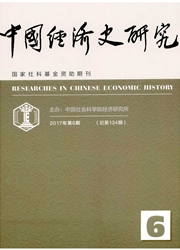

 中文摘要:
中文摘要:
古代审计在宋代达到了前所未有的高度,主要表现在:审计机构的专职化程度很高,且已形成从中央到地方的系统;审计方法有较大发展,查账法中充分注意到账证、账账、账实的相符,比较分析法主要应用于对官吏经济政绩的考核;简式审计报告的基本要素已大致具备;审计对财政财务收支能进行静态和动态相结合的审核监督,事前审计范围扩大;审计专业技术官吏初步出现。宋代审计也难免存在账籍大量积压、没有勾考,审计官吏受贿枉法徇情,审计机构设置复杂多变、缺乏独立性等问题。
 英文摘要:
英文摘要:
Song dynasty created on the audit of high professional institutions. From the view of the setup of full-time audit institutions in the internal of San Si and Doumo Kansi and Mo Kan Si under the local states Tong Pang, the full-time audit institutions in the Song dynasty has formed the system from the central to the local. Audit methods also have greatly developed in the Song dynasty. And widely notice in accordance with books and books, books and accounting vouchers, books and objects in audit method. Comparative analysis is mainly used in the appraisal of official economic achievements, according to several ten points than the original quota, increase or loss as the previous year quota. The basic elements of Chinese short form audit report already have roughly possessed in the Song dynasty. Audit for the revenues and expenditures of the fiscal financial can be the static and dynamic combination of audit supervision in the four stages of the balance of the previous period, the current income, the current spending, the current balance, and the scope of the audit in advance expanded. With the development of the audit method, audit specialized technical officers were preliminarily appeared. But the audit in Song dynasty has also unavoidably existed account books were a large backlog and no assessment, audit officials were bribery or partiality. Audit institution was complicate and changeable, and lacked the independence.
 同期刊论文项目
同期刊论文项目
 同项目期刊论文
同项目期刊论文
 期刊信息
期刊信息
